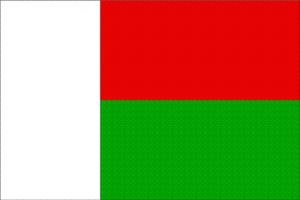Language/Plateau-malagasy/Grammar/Gender
Hi Plateau Malagasy learners! 😊
In this lesson, we will be discussing the concept of gender in Plateau Malagasy. Gender is an important part of many languages and Plateau Malagasy is no exception. By the end of this lesson, you will have a good understanding of gender in Plateau Malagasy, and be able to use it correctly in your speaking and writing. Remember, the more you practice using gender, the easier it will become!
What is Gender in Plateau Malagasy?
Gender is a grammatical concept that refers to whether a noun is masculine or feminine. Unlike some other languages with gender, Plateau Malagasy does not have a neuter gender. Knowing the gender of a noun is important in Plateau Malagasy, as it affects the form of the article used alongside it as well as adjectives.
In Plateau Malagasy, gender is not necessarily determined by the biological sex of the object, but rather by its inherent properties. For example, "mamy" (grandmother) is feminine in Plateau Malagasy, while "mpanakanto" (singer) is masculine, regardless of the actual gender of the individual referred to.
Masculine vs Feminine
In Plateau Malagasy, gender is mainly divided into masculine and feminine. Generally, most nouns that refer to males are masculine, and most nouns that refer to females are feminine. However, there are many exceptions to this rule.
Here are some examples of nouns in Plateau Malagasy that can be either masculine or feminine:
| Plateau Malagasy | Pronunciation | English |
|---|---|---|
| mpitondra | /mpitondrə/ | leader |
| mpiasa | /mpiəsə/ | worker |
And here are some examples of nouns in Plateau Malagasy that are always feminine:
| Plateau Malagasy | Pronunciation | English |
|---|---|---|
| vehivavy | /veˈhivəvi/ | woman |
| vehivavy voahosotra | /veˈhivəviˈvuˑahusutrə/ | virgin |
And here are some examples of nouns in Plateau Malagasy that are always masculine:
| Plateau Malagasy | Pronunciation | English |
|---|---|---|
| tambitamby | /tambitamˈbʲ/ | bull |
| rain'ny | /rajˈnʲ/ | king |
The Role of Articles
In Plateau Malagasy, definite and indefinite articles (the equivalent of "the" and "a/an" in English) also have different forms depending on the gender of the noun they accompany.
The indefinite article for masculine nouns is "azy," while the indefinite article for feminine nouns is "ny." For example:
- "azy andro" (a day), "azy sisa" (a moment) - masculine
- "ny alina" (a night), "ny volana" (a month) - feminine
The definite article for masculine nouns is "an," while the definite article for feminine nouns is "ny." For example:
- "an'ny alina" (the night), "an'i Kojak" (the cat) - masculine
- "ny antsika" (ours), "ny zavaka" (the cow) - feminine
Note that the same "ny" is used for the indefinite article of masculine nouns and the definite article of feminine nouns. The context will make it clear which is intended.
Gender Agreement
Adjectives and some pronouns in Plateau Malagasy must agree with the gender of the noun they are describing. This means that if a noun is feminine, any accompanying adjectives or pronouns must also be in the feminine form.
For example:
- "Vehivavy tsara ny olo-manga." (The woman's food is good.) - The adjective "tsara" (good) is in the feminine form to agree with the feminine noun "vehivavy" (woman).
- "Ny volana sy ny alina tsy mitovy vitsivitsy." (The month and the night are not exactly the same.) - The pronoun "tsy" (not) is in the feminine form to agree with both feminine nouns "volana" (month) and "alina" (night).
Vocabulary
Here are some vocabulary words related to gender in Plateau Malagasy:
| Plateau Malagasy | Pronunciation | English |
|---|---|---|
| fiainana | /fˈiajnəˈna/ | life |
| taratasy | /taratˈasi/ | letter |
| sandry | /sˈandri/ | dream |
| tompokolahy | /tɔmpʊkʊlˈahʲ/ | boy |
| tompokovavy | /tɔmpʊkʊvɑˈvi/ | girl |
Dialogue
Here's an example dialogue to illustrate the use of gender in Plateau Malagasy:
- Person 1: "Manao ahoana ianao, mpanakanto?" (How are you, singer?)
- Person 2: "Tsara ihany, mamy. Ary ianao?" (Very good, grandmother. And you?)
In this dialogue, Person 1 addresses Person 2 as "mpanakanto," which is a masculine noun. However, Person 2 responds by calling herself "mamy," which is a feminine noun.
Conclusion
That's it for our overview of gender in Plateau Malagasy. Remember, gender is an important concept in Plateau Malagasy and it affects the form of articles, adjectives and pronouns used alongside a noun. Practice makes perfect, so keep practicing! To improve your Plateau Malagasy Grammar, you can also use the Polyglot Club website. Find native speakers and ask them any questions! You can also check out our other resources for Plateau Malagasy grammar and vocabulary.
➡ If you have any questions, please ask them in the comments section below.
➡ Feel free to edit this wiki page if you think it can be improved. 😎
Sources

